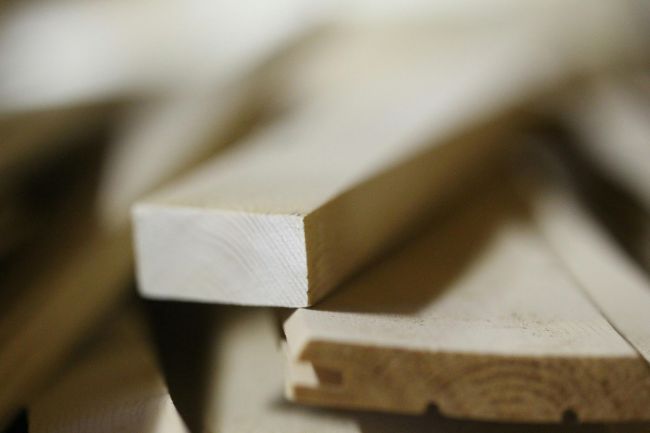A Beginner’s Guide to Fitting Beading Along Skirting Boards

Beading to your skirting boards may seem like a small detail, but it can make a noticeable difference to the overall finish of a room. Whether you’re updating the style of your interior or covering up a small gap between the floor and skirting, beading is a practical and decorative solution. In this guide, we’ll walk you through what beading is, why it’s used, how to fit it yourself, and where to take inspiration for using beading and skirting creatively around the house.Adding
What Is Beading?
Beading is a narrow strip of moulding typically added to the base of a skirting board where it meets the floor. It’s most commonly used to hide the expansion gap left when installing wood, laminate, or vinyl flooring. Beyond its functional use, beading also serves a decorative purpose—adding a layer of style and refinement to an otherwise overlooked part of your room.
You’ll usually find beading in materials like MDF, softwood, or plastic. MDF beading is particularly popular in modern homes as it’s affordable, easy to work with, and gives a clean, smooth finish once painted.
Why Use Beading with Skirting Boards?
There are several reasons why homeowners and tradespeople choose to add beading along the bottom of skirting boards:
- To conceal expansion gaps left during floor installation.
- To improve the finish when replacing flooring without removing existing skirting.
- To add character to rooms through period-style or modern detailing.
- To reduce drafts or close small gaps that may exist at the bottom edge of walls.
Using beading allows you to refresh your flooring or skirting look without committing to a full refit—ideal for renovations on a budget or rented properties.
How to Fit Beading: Step-by-Step Guide
Tools and materials you’ll need:
- Pre-cut beading strips (MDF or timber)
- Mitre box or mitre saw
- Strong grab adhesive or panel pins
- Measuring tape
- Sandpaper
- Filler and caulk
- Paint and brush (if painting after fitting)
Step 1: Measure and Cut Start by measuring each section of the room where beading is needed. Use a mitre saw or mitre box to cut the beading at a 45-degree angle for corners, ensuring a neat finish where two pieces meet.
Step 2: Test Fit Place the pieces against the skirting without fixing them in place to check that everything fits well. This is the time to make any adjustments before glue or nails come into play.
Step 3: Fix in Place Apply grab adhesive to the back of each beading strip, or fix it with small panel pins. Press it firmly against the skirting, making sure it follows the contour of the floor.
Step 4: Fill and Sand Fill any small gaps at the joints with a flexible filler or decorator’s caulk. Once dry, lightly sand to smooth over any unevenness.
Step 5: Paint or Finish Finally, paint the beading to match your skirting boards or give it a contrasting colour for a bold look.
Where to Use Beading in the Home
While skirting board beading is often associated with flooring, it can be used in a range of spaces throughout the home to create a polished and cohesive finish.
Living Rooms and Hallways In high-traffic areas like living rooms and hallways, beading can add a practical layer of durability to skirting boards. It protects the lower edge from scuffs and marks while making the transition between flooring and wall more seamless.
Bedrooms In bedrooms, beading is more of a design feature. A smooth bead running around the skirting board can make the space feel more refined and complete—especially when paired with painted walls and modern flooring.
Kitchens and Bathrooms If you’re fitting beading in moisture-prone areas, be sure to use moisture-resistant MDF (MR MDF) and appropriate finishes. Sealing the joints properly will help maintain the longevity of the beading and prevent issues like warping.
Home Offices or Studios For more stylised interior spaces, beading can be matched with bespoke skirting designs to reflect character and theme, like shaker-style or Victorian influences.
Skirting Design Inspiration
If you’re thinking beyond just fitting new beading and want to refresh your skirting boards entirely, there are lots of ways to get inspired:
- Heritage Homes: Period properties often feature high skirting with ornate profiles and matching beading or plinth blocks. Look at Georgian and Victorian homes for traditional styling.
- Modern Interiors: Sleek, square-edge MDF skirting paired with minimalistic beading is ideal for contemporary homes. Matching paintwork helps create a clean, unified look.
- Scandinavian Design: Neutral tones and low-profile mouldings are popular in Nordic interiors. Beading here is subtle and more about clean transitions than decorative detail.
- Interior Magazines and Pinterest: These are great places to explore how others are using beading in conjunction with panelling, skirting, or even flooring transitions.
Tips for a Professional Finish
- Always use a sharp blade when cutting beading to avoid splintering the MDF or timber.
- Don’t skip caulking the top edge—it creates a smooth, paint-ready surface.
- Match your beading to the skirting profile. While most skirting has a flat bottom edge, some profiles might require more careful positioning of the bead to ensure it looks cohesive.
- If painting separately, do so before installation to save time and mess.
Conclusion
Fitting beading along skirting boards is a straightforward task that can make a big visual impact, especially when attention is paid to clean cuts, neat corners, and a cohesive finish. Whether you’re giving your home a subtle refresh or working on a larger renovation, adding beading is an affordable way to get a professional finish without replacing your existing skirting.
And remember—skirting and beading don’t just serve a functional purpose. Together, they help define the style and personality of your interior, creating a polished look that can be adapted to any design preference.


